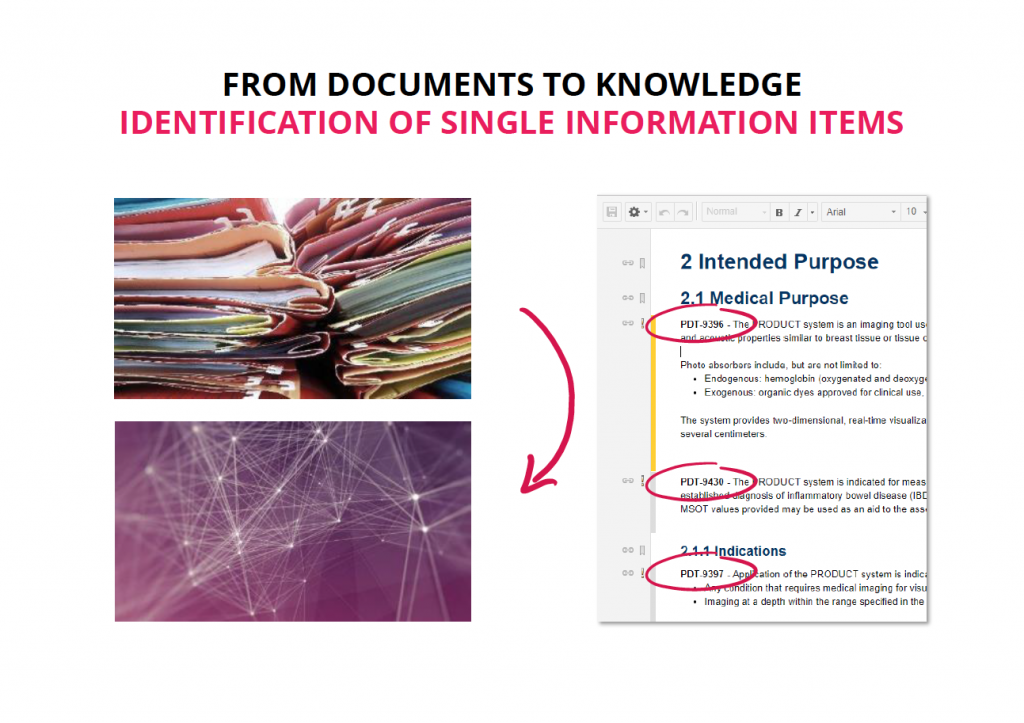The role of digitalization:
solution for Technical Documentation challenges
Three of the four existing challenges could be solved already today:
1. Reuse of information
2. Linkage between individual processes and information
3. Completeness of information
These challenges can be addressed through digitalization of processes and the associated documentation. Software solutions enable the change from a purely document-based way of working to individual “information units” with a unique ID. These each have a unique source document (“single source of truth”), can be reused in other documents in read-only mode, and allow direct linking to each other (traceability).
Where do we stand today?
The digitalization of lifecycle processes is still in its infancy in medical technology. Globally active large enterprises have usually already begun, but often isolated solutions for individual processes can be found. The result: media disruptions and data silos – only a small part of the potential benefits of digitalized processes can be exploited. There is also often a lack of a digitalization strategy at company level, consistent integration of different processes, and awareness among process users of the benefits that digitalized processes could offer.
In addition, large enterprises account for only a small share of the industry: Of the approximately 33,000 medical technology companies in Europe, about 95% are small and medium sized enterprises. They often do not have the human and financial resources to initiate digitalization projects in addition to their day-to-day business and the challenges posed by the MDR/IVDR.
As of today, regulatory documents are predominantly found in the form of PDF or Word/Excel files, sometimes also in HTML format. However, this does not allow for efficient and comprehensive integration within the own company and, if necessary, also with Notified Bodies. Rapid digitalization would increase efficiency within the company and become a competitive advantage.
How can we accelerate digitalization in medical technology to bring back more innovation and better patient care?
One answer to this question is provided by the work of the Medical Device Knowledge Unit (MDKU) e.V. and the unified data model for technical documentation.
What we need
Digitalization requires a transformation and mindset shift from documents to knowledge in form of single information units.

Digitalized processes also enable (partial) automation in the creation of content in documents and automatic consistency and completeness checks. This can significantly reduce the effort required to create the TD and improve quality. The subsequent market approval of the product is accelerated.
Subsequently, the data-based approach enables better market surveillance and allows efficient creation of regular post-market surveillance documents. Necessary product changes can also be implemented more efficiently. In sum, the digitization of regulatory processes and the TD has a positive impact on the entire ecosystem in the industry and on patient care:
- Resources at manufacturers and Notified Bodies are released and can be used for value-adding tasks
- New diagnostic or therapeutic procedures and improvements to approved products are available to patients more quickly.
Considering the clear advantages, the question arises:
Why hasn’t every manufacturer of medical /IVD devices digitalized their processes and documentation yet?
Support along the way
As MDKU, we want to support all stakeholders in the industry on their digitalization journey.
MDKU Medical Device Knowledge Units e.V.
Am Weichselgarten 7
91058 Erlangen
Germany